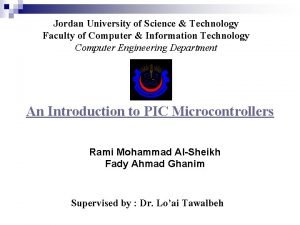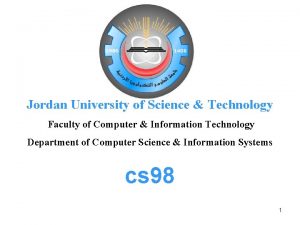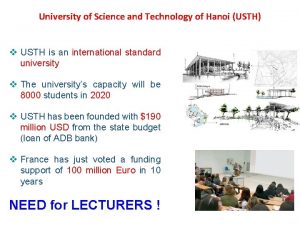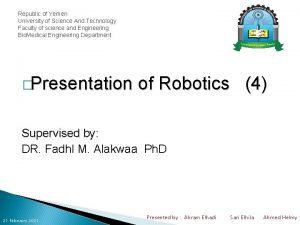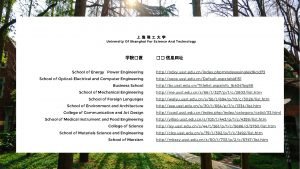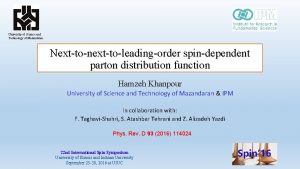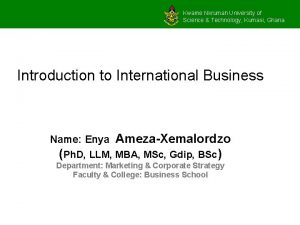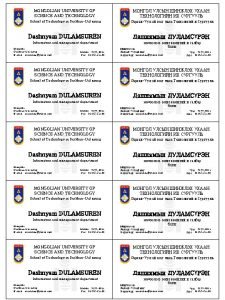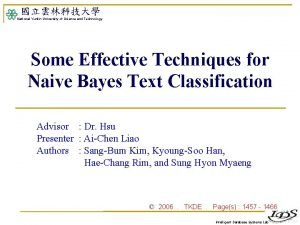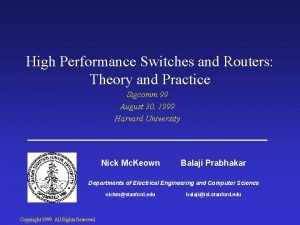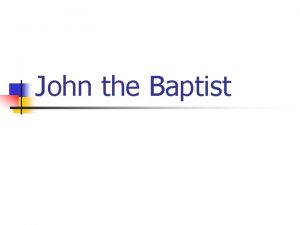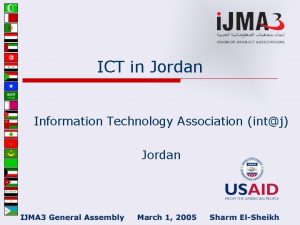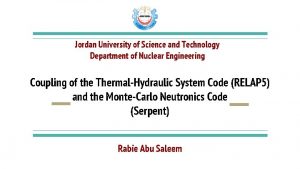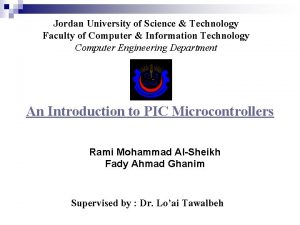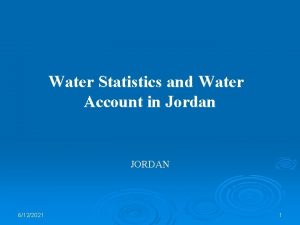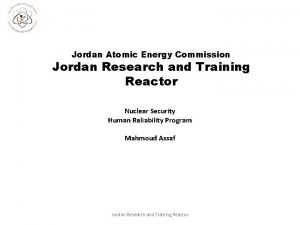Jordan University of Science and Technology High Performance















- Slides: 15

Jordan University of Science and Technology High Performance and Cloud Computing (HPCC) Group Teach. Cloud: A Cloud Computing Educational Toolkit ICA CON 2012 Yaser Jararweh, Zakariea Alshroa, Mazen Kharbutli, Moath Jarrah, and Mohammad Alsaleh. yijararweh@just. edu. jo

Introduction Cloud Computing needs professionals who are able to deploy, maintain, and advance the cloud technology. It’s the universities task to generate such professionals. Universities worldwide are introducing cloud computing technologies in their curricula by updating existing courses or developing new ones. Cloud computing builds on a wide range of different computing technologies with many complexities. This complexity presents a major obstacle for the students to grasp and thoroughly understand cloud computing.

Main Problem The diversity of cloud computing related areas requires the students to put great efforts to understand each one of these areas alone in addition to integrating them in a single platform. There are no teaching tools to cover the different aspects of cloud computing as a whole makes teaching more theoretical-oriented, and therefore, less effective. Although there exists teaching tools for most of the cloud components alone, no full-system tool exists yet.

Main Problem At Jordan University of Science and Technology (JUST), we were one of the first universities in the MENA region to introduce cloud computing concepts in our courses for both graduate and undergraduate students. (2010) At the end of the course, we conducted a students' survey and asked the students to identify which challenges they thought were most important.

students' survey Results Challenges in Teaching Cloud Computing as Identified by Students

Possible Solutions The use of real infrastructures such as EC 2, IBM Smart Cloud, and Azure. Problem: Limited capabilities as a teaching tools, required some previous experience from the students, time consuming, and costly, etc. Solution: Simulation What is available : Cloud. Sim, The University of Melbourne. Problems: very limited, basic Cloud components modeling, hard to use in education and research (No GUI), No real workload Modeling, it lacks BPM and SLA components.

Our Solution: Teach. Cloud uses Cloud. Sim as the basic design platform and introduces many new enhancements on top of it. Developing a GUI for the toolkit. Adding the Rain cloud workload generator to the Cloud. Sim simulator. Adding new modules related to SLA and BPM. Adding new cloud network models (VL 2, BCube, Portland, and DCell) Introducing a monitoring outlet for most of the cloud system components. Adding an action module that enables students to reconfigure the cloud system and study the impact of such changes on the total system performance.

Creating data centers, VMs in Teach. Cloud

Workload Generator in Teach. Cloud

SLA Management in Teach. Cloud

Network Topology in Teach. Cloud

Sample of the simulation results in Teach. Cloud

Use case scenario for Teach. Cloud First, the student can build a cloud system by building a data center with a given number of servers and VMs in addition to a specific network topology. Next, the student can set an SLA and BPM plan for his cloud system. After that, the student will apply a workload with certain intensity and collect information for the system resources utilization. Then, the students can start changing the workload intensity up and down and study how this will impact the system's resources. Moreover, the student can scale cloud system resources up and down and study the impact on the SLA violation and system's resources utilization.

Conclusion and future plans Teach. Cloud is still in its early stages and requires a sheer amount of work in addition to active participation from different partners from both the industry and academia. Teach. Cloud will be open source software available to all researchers and students working in Cloud Computing related projects and courses. Also, we are planning to create an international development community for Teach. Cloud to leverage the capabilities, features, performance and credibility of it.

Questions?
 Jordan university of science and technology
Jordan university of science and technology Jordan university of science and technology ranking
Jordan university of science and technology ranking Jordan university of science and technology
Jordan university of science and technology Usth
Usth Ulsan university of science and technology
Ulsan university of science and technology Science and technology university yemen
Science and technology university yemen University of shanghai for science and technology
University of shanghai for science and technology Hamzeh khanpour
Hamzeh khanpour Npust scholarship
Npust scholarship University of science and technology kumasi
University of science and technology kumasi Mongolian university of science and technology logo
Mongolian university of science and technology logo National yunlin university of science and technology
National yunlin university of science and technology Think central science fusion
Think central science fusion Gju
Gju What's your favorite lesson
What's your favorite lesson High performance switches and routers
High performance switches and routers
